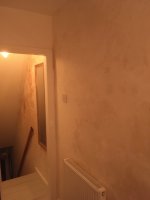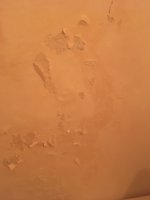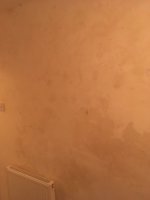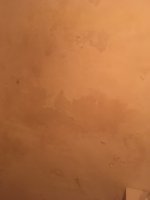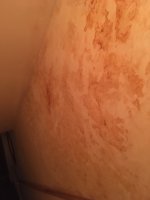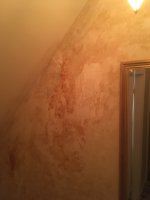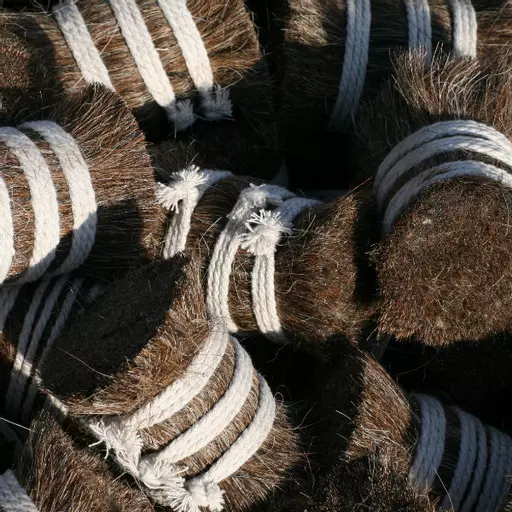CastonGuitar
New Member
Hello Lime Plasterers!
3 years ago, we bought a flint cottage. The first job we did was repointing the whole external gable wall ( with sand and nhl 3.5 lime as we are only a couple of miles from the coast) as the mortar was cement-based instead of the original lime pointing.
We stripped the old gypsum plaster and filler off the internal gable end wall which runs up the staircase and into a small bedroom.
It took 2.5 years for it to dry out enough to contemplate re lime plastering.
We used slaked lime putty and pavior sand as a render before using watered-down putty as a whitewash paint.
We finished this job in the middle of Summer 2020, it looked excellent!
In September 2020, after living in the property for one month, with the central heating on, we experienced heavy driving rain on the north-facing gable wall. Within a day, large wet patches appeared on the wall both in the stairwell and the bedroom.
We've had the heating on full blast along with trying dehumidifiers but the walls remain wet, stained and flaking. After 4 full months of trying to dry it out, it seems to just keep sucking our moisture into the house.
We have bought a bag of casein lime filler to try out but the walls are still not dry enough for us to consider this.
I hope someone has some idea of where we have gone wrong and if it's possible for the rain to travel over 18 inches through the flint wall? We did think maybe it was condensation running down the wall from the poorly insulated roof but we had this redone in November with no change to the walls.
Although our aim was to make the wall breathable is this a mistake as it is a cold, north-facing wall?
Many thanks for any wisdom you may have!
Courtenay
3 years ago, we bought a flint cottage. The first job we did was repointing the whole external gable wall ( with sand and nhl 3.5 lime as we are only a couple of miles from the coast) as the mortar was cement-based instead of the original lime pointing.
We stripped the old gypsum plaster and filler off the internal gable end wall which runs up the staircase and into a small bedroom.
It took 2.5 years for it to dry out enough to contemplate re lime plastering.
We used slaked lime putty and pavior sand as a render before using watered-down putty as a whitewash paint.
We finished this job in the middle of Summer 2020, it looked excellent!
In September 2020, after living in the property for one month, with the central heating on, we experienced heavy driving rain on the north-facing gable wall. Within a day, large wet patches appeared on the wall both in the stairwell and the bedroom.
We've had the heating on full blast along with trying dehumidifiers but the walls remain wet, stained and flaking. After 4 full months of trying to dry it out, it seems to just keep sucking our moisture into the house.
We have bought a bag of casein lime filler to try out but the walls are still not dry enough for us to consider this.
I hope someone has some idea of where we have gone wrong and if it's possible for the rain to travel over 18 inches through the flint wall? We did think maybe it was condensation running down the wall from the poorly insulated roof but we had this redone in November with no change to the walls.
Although our aim was to make the wall breathable is this a mistake as it is a cold, north-facing wall?
Many thanks for any wisdom you may have!
Courtenay

